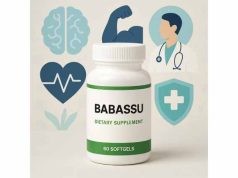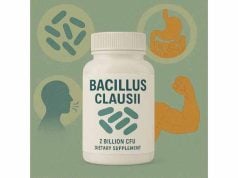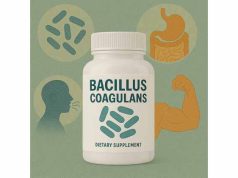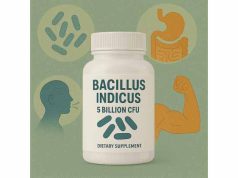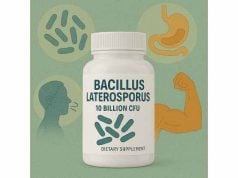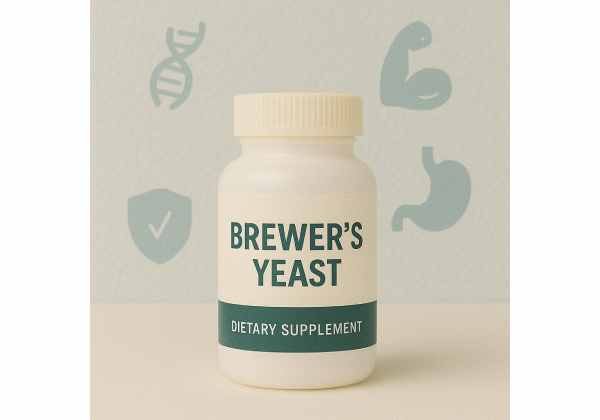
Brewer’s yeast is far more than just a byproduct of beer brewing. This ancient, nutrient-rich supplement—derived from Saccharomyces cerevisiae—has earned its reputation as a natural powerhouse for supporting digestive health, energy, immune function, and beautiful skin and hair. Packed with B vitamins, protein, fiber, minerals, and beneficial beta-glucans, brewer’s yeast is a vegan-friendly option for those seeking improved vitality, enhanced metabolism, and daily nutritional insurance. Whether used for natural energy, supporting gut balance, or as a protein boost, brewer’s yeast adapts to many wellness goals. Discover how this time-tested supplement can benefit you, how it works, and the safest ways to use it for maximum results.
Key Takeaways
- Brewer’s yeast is a potent source of B vitamins, plant protein, minerals, and gut-friendly fiber.
- May naturally boost energy, support immune defenses, and promote digestive and skin health.
- Contains beta-glucans and chromium, offering metabolic and blood sugar benefits.
- Safe for most adults, but some may experience mild digestive side effects or interact with certain medications.
- Versatile as a powder, flakes, or tablet—can be added to smoothies, foods, or taken as a supplement.
Table of Contents
- Brewer’s Yeast Origins, Nutritional Composition, and Unique Features
- How Brewer’s Yeast Works: Biological Mechanisms and Metabolic Effects
- Science-Backed Benefits of Brewer’s Yeast for Wellness and Nutrition
- Brewer’s Yeast Safety, Potential Side Effects, and Drug Interactions
- Brewer’s Yeast Dosage, Usage Recommendations, and Best Practices
- Frequently Asked Questions About Brewer’s Yeast Supplements
Brewer’s Yeast Origins, Nutritional Composition, and Unique Features
Brewer’s yeast is a single-celled fungus—Saccharomyces cerevisiae—originally used for centuries in the fermentation of beer, wine, and bread. Its historic use spans ancient Egypt, Mesopotamia, and Rome, where it was valued not only for brewing but also for its restorative and nourishing effects. Today, brewer’s yeast is cultivated specifically as a dietary supplement and functional food, celebrated for its dense nutrition and adaptability.
What Makes Brewer’s Yeast Different?
Not all yeast supplements are the same. Brewer’s yeast is produced from the fermentation process of beer or is specially grown on nutrient-rich mediums like barley or molasses. The final product is thoroughly deactivated (non-living), which means it won’t ferment in your gut or contribute to yeast overgrowth. Instead, it serves as a concentrated source of nutrients.
Nutritional Breakdown
- B Vitamins: Brewer’s yeast is a standout source of nearly all B vitamins, especially B1 (thiamine), B2 (riboflavin), B3 (niacin), B5, B6, folate, and biotin. B12 is usually not naturally present unless fortified, but some blends add it for vegan diets.
- Protein: Contains 40–50% complete protein by weight, supplying all essential amino acids for muscle maintenance, repair, and overall health.
- Minerals: Rich in selenium, chromium (supports healthy blood sugar), zinc, iron, magnesium, and potassium.
- Fiber and Beta-Glucans: Delivers soluble and insoluble fiber, including beta-glucans, which promote gut health and immune resilience.
- Trace Elements: Provides copper, manganese, and small amounts of other minerals essential for enzymatic processes.
What Does Brewer’s Yeast Taste Like?
Brewer’s yeast has a naturally bitter, savory flavor. Some preparations remove bitterness to produce milder flakes or powders. It can be sprinkled on foods (like popcorn or salads), blended into smoothies, or mixed with juice or water.
Forms and Supplement Types
- Powder and Flakes: Easy to mix into foods, shakes, or recipes.
- Tablets and Capsules: Convenient for those who dislike the taste or want precise dosing.
- Enriched or Fortified Blends: May contain added B12 or other nutrients for specific dietary needs.
Difference from Nutritional Yeast
Brewer’s yeast and nutritional yeast are closely related but have some differences. Nutritional yeast is usually grown specifically as a supplement and is typically milder in flavor, while brewer’s yeast is a byproduct of beer production or grown on other media. Both are deactivated and offer similar benefits, but brewer’s yeast is especially valued for its chromium and higher mineral content.
Unique Features
- Vegan and Allergen-Free: Free from animal products, dairy, and gluten (when produced on gluten-free media).
- Dense Nutrition in Small Servings: Just a tablespoon delivers a powerful punch of B vitamins and protein.
- Versatility: Used as a supplement, in foods, or as a functional ingredient for flavor and nutrition.
Sustainability
Yeast is a sustainable crop, requiring little land or water. Its efficient production makes it an environmentally responsible choice for protein and micronutrient supplementation.
Brewer’s yeast is not just for brewers or bakers—it’s a comprehensive nutritional supplement with an impressive legacy and a bright future in wellness.
How Brewer’s Yeast Works: Biological Mechanisms and Metabolic Effects
Brewer’s yeast may look simple under the microscope, but its complex nutritional matrix delivers a wide range of health-promoting effects. Let’s explore the key biological mechanisms that underlie its popularity as a supplement.
B Vitamins: Energy, Metabolism, and Nervous System Health
The most celebrated property of brewer’s yeast is its dense concentration of B vitamins—essential for energy production, red blood cell synthesis, nervous system function, and cellular repair.
- Thiamine (B1): Vital for carbohydrate metabolism and nerve signaling.
- Riboflavin (B2) and Niacin (B3): Support energy production, detoxification, and healthy skin.
- B5 and B6: Aid hormone production, mood balance, and protein metabolism.
- Folate: Crucial for DNA synthesis, red blood cell formation, and fetal development.
- Biotin: Important for skin, hair, and nail health.
By supplying these vitamins in their naturally occurring forms, brewer’s yeast supports cellular energy and helps convert food into fuel, making it a go-to for combating fatigue or supporting demanding lifestyles.
Complete Protein for Growth, Recovery, and Satiety
Brewer’s yeast is unique among plant sources for offering a full spectrum of essential amino acids. Its protein content supports:
- Muscle Growth and Repair: Especially important for athletes, older adults, or anyone with increased protein needs.
- Appetite Regulation: Protein increases feelings of fullness, helping with weight management.
- Tissue Healing: Supports the building blocks for skin, hair, and immune cells.
Beta-Glucans and Fiber: Gut Health and Immunity
The fiber in brewer’s yeast includes beta-glucans, a special type of soluble fiber with well-studied health effects:
- Prebiotic Action: Nourishes beneficial gut bacteria, promoting a balanced microbiome and improved digestion.
- Immune Modulation: Beta-glucans stimulate immune cells, enhance pathogen defense, and may reduce inflammation.
- Cholesterol Control: Fiber helps bind cholesterol in the gut, supporting healthy blood lipid levels.
Chromium: Blood Sugar and Metabolic Support
A standout feature of brewer’s yeast is its high content of bioavailable chromium, an essential trace mineral for:
- Blood Sugar Regulation: Chromium enhances insulin action, helping stabilize blood glucose levels and prevent energy crashes.
- Metabolic Efficiency: Supports carbohydrate, fat, and protein metabolism—key for weight management and energy.
Antioxidants and Trace Minerals
Brewer’s yeast contains antioxidant compounds like selenium and zinc, which protect cells from oxidative stress, support thyroid health, and reinforce the immune system.
How Brewer’s Yeast Is Absorbed and Used
Once ingested, the nutrients in brewer’s yeast are rapidly absorbed in the small intestine. The B vitamins and minerals enter the bloodstream to be used by tissues for energy production, DNA repair, immune defense, and countless metabolic functions.
Synergistic Action
The blend of protein, vitamins, fiber, and minerals in brewer’s yeast works synergistically to support whole-body wellness, making it more effective than isolated nutrients alone.
Brewer’s yeast operates as a natural, multi-nutrient supplement, priming your metabolism, supporting gut and immune health, and filling nutritional gaps in modern diets.
Science-Backed Benefits of Brewer’s Yeast for Wellness and Nutrition
The real-world benefits of brewer’s yeast go far beyond its label. Clinical research and centuries of traditional use support its role in boosting daily energy, digestive comfort, skin radiance, and more. Let’s dive into the key evidence-based uses that make brewer’s yeast a staple in many wellness routines.
1. Natural Energy and Mental Clarity
Because brewer’s yeast is rich in bioavailable B vitamins, it supports:
- Sustained Energy: Fuels the body’s ability to convert carbs, fats, and proteins into ATP—the energy your cells use.
- Mental Focus: B vitamins nourish brain and nerve function, aiding concentration and cognitive performance.
- Fatigue Relief: Especially helpful during periods of stress, study, or recovery.
2. Digestive Health and Gut Balance
The prebiotic fiber and beta-glucans in brewer’s yeast promote:
- Balanced Microbiome: Increases beneficial bacteria, crowding out pathogens and supporting regular bowel movements.
- Digestive Comfort: May reduce bloating, gas, or constipation, especially in those with low-fiber diets.
- Immune Resilience: A healthy gut means a stronger immune system.
3. Metabolic and Blood Sugar Support
Brewer’s yeast’s chromium content is associated with:
- Improved Blood Sugar Control: Supports insulin sensitivity, making it useful for people with blood sugar fluctuations or at risk of metabolic syndrome.
- Healthy Weight Management: Stable blood sugar helps curb cravings and prevent overeating.
4. Skin, Hair, and Nail Vitality
B vitamins, biotin, and amino acids are foundational for beauty from within:
- Radiant Skin: B2, B3, and biotin promote skin healing and glow.
- Stronger Hair and Nails: Amino acids and minerals support keratin production, reducing brittleness.
- Clear Complexion: Brewer’s yeast has been traditionally used to help with mild acne and blemishes.
5. Immune System Enhancement
The beta-glucans and micronutrients in brewer’s yeast have immunomodulating effects:
- Improved Resistance: Beta-glucans may help the body respond to infections and reduce the duration of colds or flu.
- Antioxidant Defense: Selenium, zinc, and other antioxidants protect cells from damage and support overall immunity.
6. Heart Health and Cholesterol
Soluble fiber in brewer’s yeast helps:
- Lower LDL (“bad”) Cholesterol: Binds cholesterol in the digestive tract for removal.
- Reduce Inflammation: Anti-inflammatory effects benefit blood vessels and heart health.
7. Plant-Based Protein and Vegan Nutrition
For those avoiding animal products, brewer’s yeast is a simple way to:
- Boost Protein Intake: Supports muscle repair and satiety.
- Fill Nutritional Gaps: Delivers minerals often lacking in vegan diets.
8. General Wellness and Nutritional Insurance
Modern diets are often low in micronutrients and fiber. Brewer’s yeast acts as a daily insurance policy, bridging common nutritional gaps with just a spoonful or a couple of tablets.
Who May Benefit Most?
- Students, busy professionals, and athletes seeking natural energy and focus
- Individuals managing blood sugar or weight
- Those interested in gut health, immune strength, or natural beauty
- Vegans, vegetarians, or anyone wanting nutritional insurance
Brewer’s yeast is a versatile, science-backed supplement for overall wellness, daily energy, and preventive health.
Brewer’s Yeast Safety, Potential Side Effects, and Drug Interactions
Brewer’s yeast has been consumed for centuries as both a supplement and a food ingredient, generally earning high marks for safety. Still, as with any concentrated natural product, there are specific tolerability considerations, side effects, and possible drug interactions to keep in mind to ensure safe, enjoyable use.
General Safety Profile
For most healthy adults, brewer’s yeast is very well tolerated when consumed in recommended amounts. Its long-standing use in both supplement and culinary traditions (like in bread, beer, or as a savory seasoning) reflects its gentle effect on the digestive and immune systems. However, some individuals may need to exercise more caution, especially if they have certain medical conditions or take specific medications.
Potential Side Effects
While most people do not experience adverse effects, some users may notice:
- Digestive Upset: Gas, bloating, or mild stomach discomfort are the most common side effects, especially if starting with high doses or if your diet is low in fiber. Gradually increasing intake and consuming with meals can help.
- Headache or Migraine: Brewer’s yeast contains small amounts of tyramine, which may trigger headaches or migraines in susceptible individuals.
- Mild Skin Rash or Itching: Rarely, allergic reactions like skin irritation can occur. Discontinue use if you notice any rash, itching, or swelling.
- Exacerbation of Yeast Infections: While deactivated, those with chronic yeast infections or sensitivities (like Candida overgrowth) may want to introduce brewer’s yeast with caution and monitor for symptoms.
Who Should Avoid or Limit Brewer’s Yeast?
- Individuals with Gout: Brewer’s yeast contains purines, which can be broken down into uric acid and may trigger gout attacks in sensitive individuals. If you have a history of gout, discuss with your healthcare provider before use.
- People with Crohn’s Disease or Ulcerative Colitis: Some evidence suggests a possible association between yeast and exacerbation of symptoms in certain autoimmune digestive disorders. Consult your doctor if you have inflammatory bowel disease.
- Those with Yeast Allergies: Though rare, true yeast allergies can lead to significant reactions and should be taken seriously.
- Those Taking Certain Medications: See below for important drug interaction information.
Drug Interactions to Know
- Monoamine Oxidase Inhibitors (MAOIs): Because brewer’s yeast contains tyramine, it may interact dangerously with MAOIs used for depression or Parkinson’s, potentially causing a sudden, severe increase in blood pressure.
- Diabetes Medications: Brewer’s yeast (especially due to its chromium content) may enhance the effects of blood sugar-lowering drugs. If you are on diabetes medications, monitor blood sugar levels closely and consult your doctor.
- Antifungal Drugs: Some antifungals may reduce the efficacy of brewer’s yeast or vice versa. Take separately and consult your healthcare provider if on antifungal therapy.
Pregnancy, Breastfeeding, and Children
- Pregnancy and Breastfeeding: Brewer’s yeast is generally considered safe in food amounts, but supplement doses should only be used under medical guidance during pregnancy or lactation.
- Children: Small food-based doses (like those found in bread) are safe, but supplement doses should be introduced only after consulting a pediatrician.
Quality and Contamination Concerns
- Choose reputable brands that test for heavy metals, microbial contamination, and gluten (if needed).
- Store in a cool, dry place to prevent spoilage.
Signs to Discontinue Use
- Persistent headaches, swelling, severe digestive upset, allergic reactions, or any new or worsening health symptoms.
Safe Use Tips
- Start with a small serving and increase gradually.
- Consume with meals to enhance absorption and reduce digestive side effects.
- Stay hydrated, as fiber and protein content may increase water needs.
Brewer’s yeast is safe for most, but awareness and a personalized approach will help you maximize benefits while avoiding unwanted effects.
Brewer’s Yeast Dosage, Usage Recommendations, and Best Practices
Getting the most out of brewer’s yeast means finding the right dosage and integrating it into your daily routine in a way that fits your taste and health needs. The following guidelines will help you maximize benefits while minimizing side effects.
Typical Dosage Guidelines
- Powder or Flakes:
Standard serving size: 1–2 tablespoons (5–15 grams) per day for general health and nutrition. Start with 1 teaspoon (about 3 grams) and gradually increase as tolerated. - Tablets/Capsules:
Follow the label’s directions. Typical range is 1,000–3,000 mg daily, divided into 2–3 doses. - Fortified Blends:
If using a B12-fortified product or blend, check the label to avoid excess intake.
How to Take Brewer’s Yeast
- With Food: Adding to meals enhances absorption and reduces risk of digestive discomfort.
- Mixing Tips: Stir into yogurt, smoothies, shakes, or sprinkle over popcorn, salads, oatmeal, or soups. Its savory taste pairs well with umami-rich dishes.
- Baking or Cooking: Can be added to bread, pancakes, or energy bites for extra nutrition.
Timing and Consistency
- Brewer’s yeast can be taken any time of day, though some find morning or lunch best for energy support.
- For digestive benefits, daily consistency is key.
Who Should Use Lower Doses or Seek Medical Advice?
- If you are sensitive to high-fiber foods, start with smaller servings.
- Those with kidney conditions or on potassium-restricted diets should check with their healthcare provider.
- Anyone with chronic migraines, gout, or on medications that interact (see prior section).
Combining Brewer’s Yeast with Other Supplements
- Works synergistically with probiotics, multivitamins, and fiber-rich foods.
- Avoid taking with high doses of other B vitamin supplements unless directed, to prevent excessive intake.
Storage and Quality
- Store in a sealed container away from moisture and heat.
- Use within the expiration date for best potency and taste.
Adjusting Dosage
- Increase slowly to allow your body and digestive system to adjust.
- Decrease if you experience bloating, headache, or any discomfort.
Sample Daily Use Plan
- Beginner: 1 teaspoon (3 grams) mixed in a smoothie or sprinkled on breakfast.
- Intermediate: 1 tablespoon (7 grams) split between two meals.
- Advanced/Active: 2 tablespoons (up to 15 grams) spread across meals for higher energy/protein needs.
Always listen to your body and seek professional guidance if you have health conditions or take prescription medications.
Frequently Asked Questions About Brewer’s Yeast Supplements
What are the main health benefits of brewer’s yeast?
Brewer’s yeast is rich in B vitamins, protein, fiber, chromium, and minerals that support energy, metabolism, digestion, immunity, and skin health. It is valued for boosting daily nutrition and may help regulate blood sugar and appetite.
Can brewer’s yeast help with hair and skin health?
Yes. The B vitamins (biotin, niacin, riboflavin) and amino acids in brewer’s yeast support strong hair, skin healing, and a clear complexion, making it a common “beauty from within” supplement.
Is brewer’s yeast safe for people with diabetes?
Brewer’s yeast is often used to support healthy blood sugar, thanks to its chromium content. However, those on diabetes medication should monitor levels closely and consult a healthcare provider before adding it.
Can brewer’s yeast cause side effects?
Some people experience mild digestive upset, headaches, or—rarely—allergic reactions. Starting with a low dose and gradually increasing usually minimizes risk.
How should I take brewer’s yeast for best results?
Start with 1 teaspoon daily, mixing powder into food or drinks. Increase gradually, aiming for 1–2 tablespoons daily. Tablets are a convenient option for those who prefer not to taste the supplement.
Are there any important drug interactions with brewer’s yeast?
Brewer’s yeast should be avoided by those taking MAOIs, and used with caution if taking diabetes or antifungal medications. Always check with your healthcare provider.
Can children and pregnant women take brewer’s yeast?
Brewer’s yeast is safe in food amounts for most people. Pregnant or breastfeeding women and children should consult a doctor before using supplement doses.
Disclaimer:
The information in this article is for educational purposes only and should not be considered as a substitute for medical advice, diagnosis, or treatment. Always consult with your healthcare provider before beginning any new supplement, especially if you are pregnant, nursing, taking medications, or have a health condition.
If you enjoyed this article, please share it on Facebook, X (formerly Twitter), or your preferred social media channel. Follow us for more practical guides and evidence-based tips on natural health. Your support helps us keep creating trustworthy wellness resources for all—thank you!


